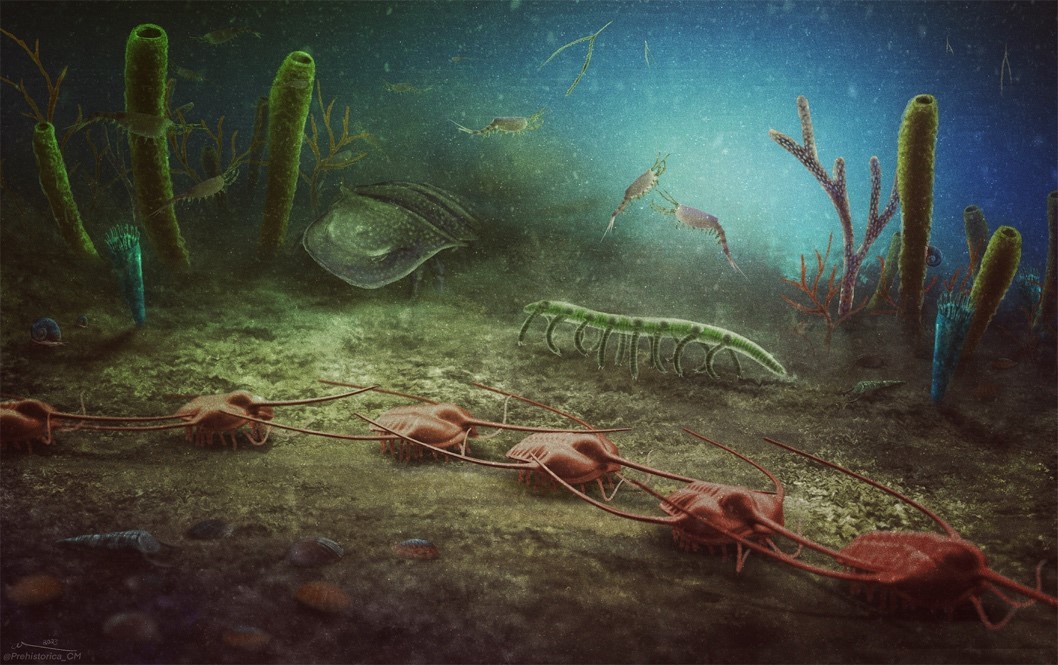Discovery of an exceptional fossil deposit in Hérault
A new fossil deposit has been unearthed in the Hérault region of France, thanks to the long-term efforts of a couple of amateur paleontology enthusiasts. Their discoveries have been studied by an international team including Bertrand Lefebvre, Christophe Dupichaud and Antoine Vite from the LGL-TPE.
Illustration: Artistic reconstruction of the marine biodiversity of the Black Mountain during the Lower Ordovician (-485 to -477 Ma). Credit: Christian McGall, from Saleh et al. 2024, CC-BY 4.0.

With more than 400 fossils dating back 470 million years, the Cabrières site near Pézenas provides the closest environment to the South Pole ever observed at this time. This makes it one of the richest and most diverse Ordovician deposits in the world. Its exceptional level of preservation has led to the extremely rare discovery of soft-bodied organisms. In particular, the discovery of a wide range of algae and sponges contributes to a better understanding of their pivotal role in the ecosystem of the period.
These observations cast doubt on the earlier idea of a decline in biodiversity or biological extinction between the Cambrian and Ordovician periods some 485 million years ago. On the other hand, the high biodiversity observed confirms the hypothesis that species migrated to the southern hemisphere as a refuge zone, to escape the excessively high temperatures of tropical zones at that time.
This initial study of the site, published in Nature Ecology & Evolution on February 9, is the starting point for a research program that will extend over several years, with large-scale excavations followed by in-depth analysis of the fossils using innovative imaging techniques. The aim is to reveal in detail their external and internal anatomy, their kinship relationships and their way of life.